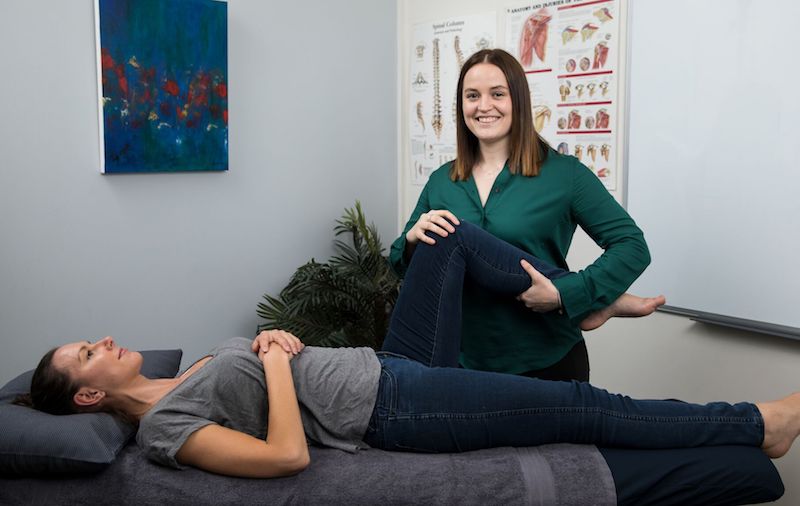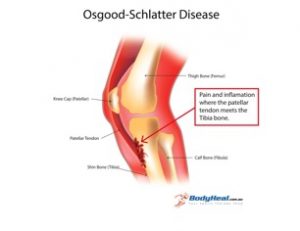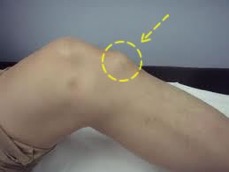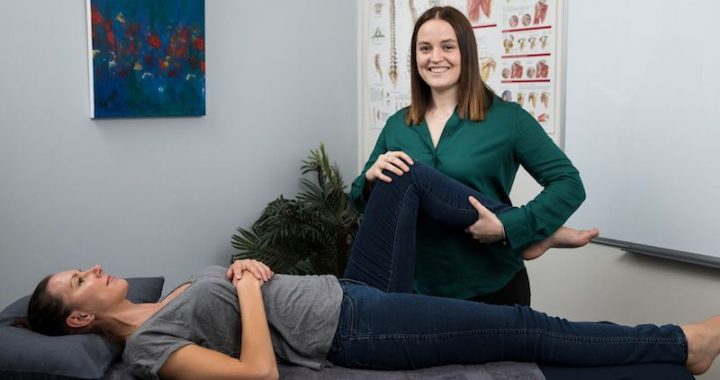Does your child suffer from knee pain?
By North Ryde Physiotherapist Nicola Simpson

Osgood Schlatter Disease is a condition where the growth plate located at the front of the knee becomes inflamed and painful. Osgood Schlatter Disease is one of the most common causes of knee pain in adolescents aged between 9 and 15, and typically this disease affects children who have just gone through a growth spurt and participate in a high volume of sports involving running and jumping. In the following blog, Physiotherapist Nicola Simpson discusses what Osgood Sclatter Syndrome is, the signs and symptoms, and what you or your health professional can do to help.
How does Osgood Sclatter Disease occur?

Osgood Schlatter Disease occurs when the growth plate located at the front of the knee (particularly on the little bump at the front of the shin called the tibial tubercle) becomes inflamed and painful. When an adolescent goes through a growth spurt, the quadricep muscles and patellar tendon can’t keep up, and therefore become very tight. This added pressure causes the tendon insertion at the front of the knee to fray, resulting in inflammation and pain in the knee.
What are the signs and symptoms of Osgood Sclatter Disease?
Your child may be suffering from Osgood Sclatter Disease if they are experiencing the following symptoms:
- Pain at the front of the knee worsening with sport or activity, but often feels better after resting
- Limping after exercise
- The front area of the knee, over the tibial tubercle, is tender to touch and/or is swollen
What can I do to help with Osgood Sclatter Disease?
If your child is experiencing pain associated with Osgood Sclatter Disease, it is recommended that they rest from any aggravating activities or applying direct pressure, such as kneeling, until they have been assessed by a health professional. You can also apply an ice pack to the painful region (we recommend application of ice for 20 minutes of every hour, avoiding direct skin contact with the ice by placing a towel between).
How can a health professional help with Osgood Sclatter Disease?
Osgood Schlatter Disease is a self limiting condition, with symptoms usually dissipating once the growth spurt is finished. However, as this can take up to 2 years, if your child is experiencing the symptoms of Osgood Sclatter Disease, booking an appointment with a health professional, such as a Physiotherapist, Osteopath or Chiropractor, can help ease pain, address any other mechanical factors that contribute to the condition, and will assist in getting your child back on the field faster.
In an appointment with a health professional, your health practitioner will provide manual therapy, as well as advice and education on the condition and its prognosis. Treatment by your health professional may include:
- Manual therapy including soft tissue release, mobilisations and ice therapy
- Muscle strengthening
- Improvement of motor control
- Taping
- Comprehensive home exercise program
- Orthotic prescription if necessary
Where can I learn more about Physiotherapist Nicola Simpson?
For more information on Nicola Simpson and Physiotherapy here at Ryde Natural Health Clinic, or to book an appointment, call RNHC Reception on (02) 9878 5021, or head to https://rydenaturalhealthclinic.com.au/services/physiotherapy-north-ryde/.

